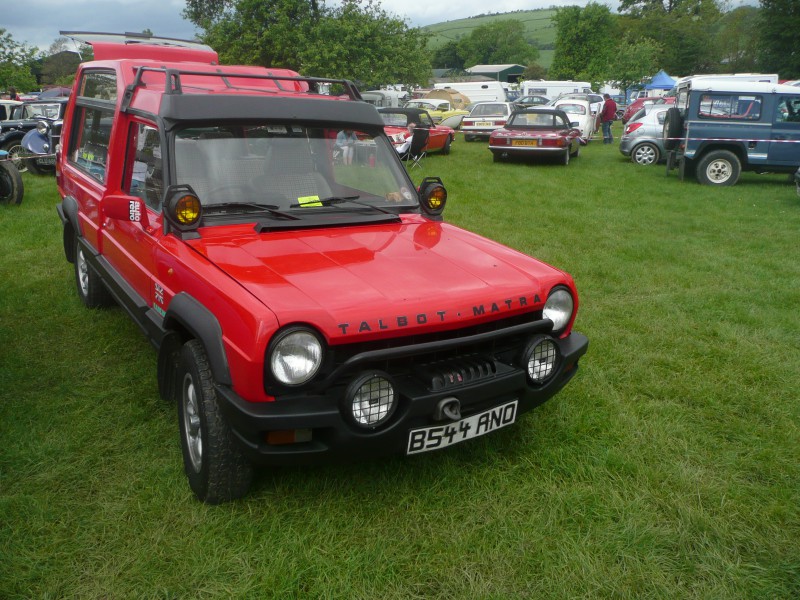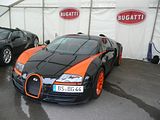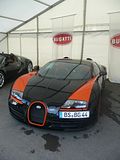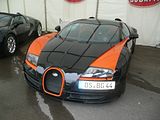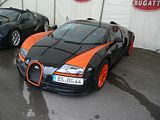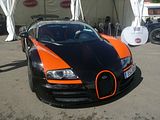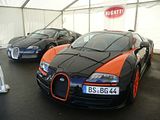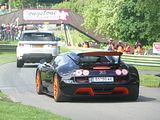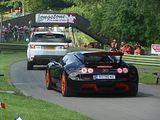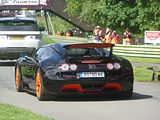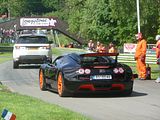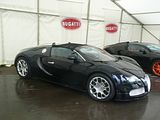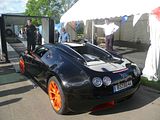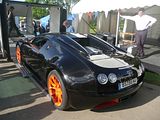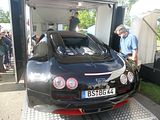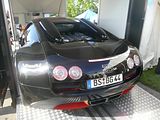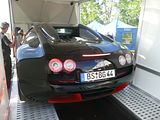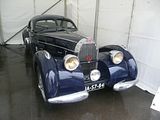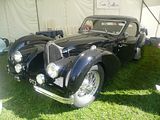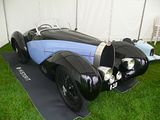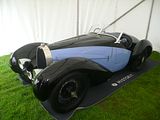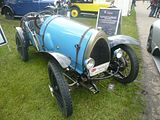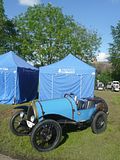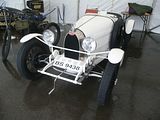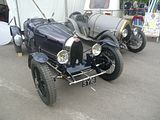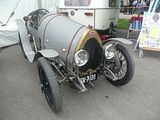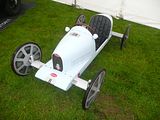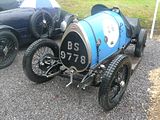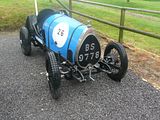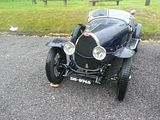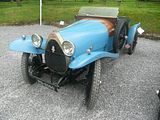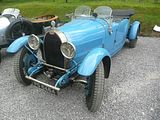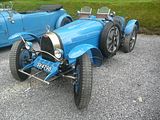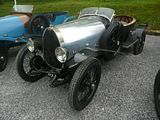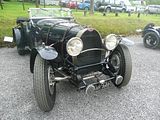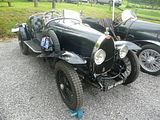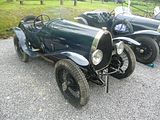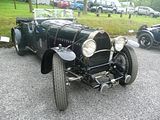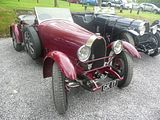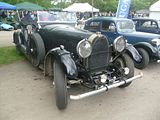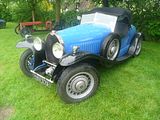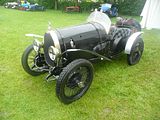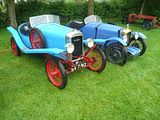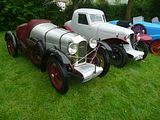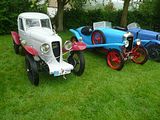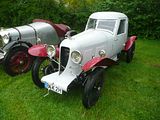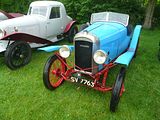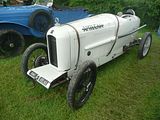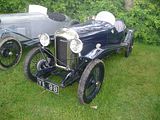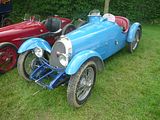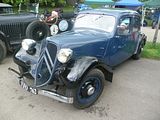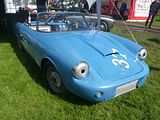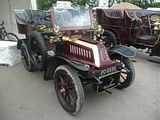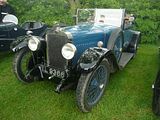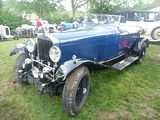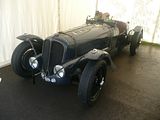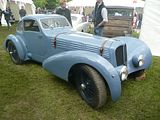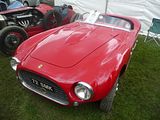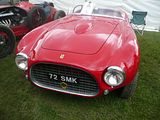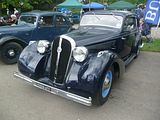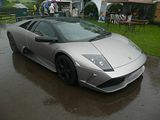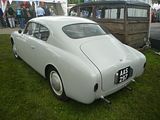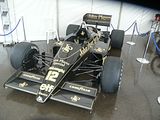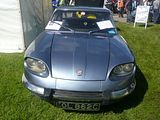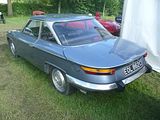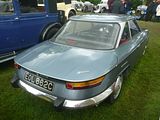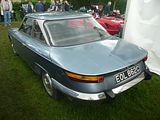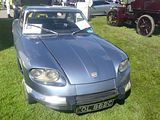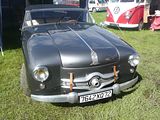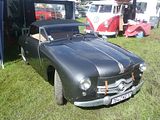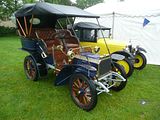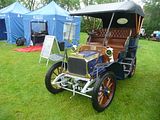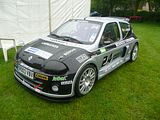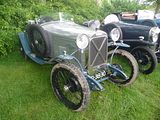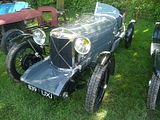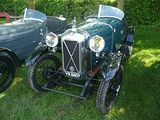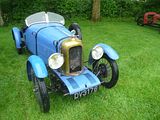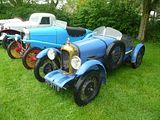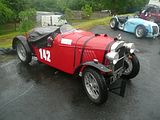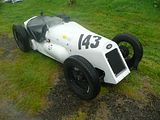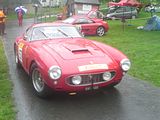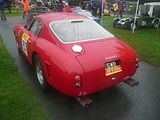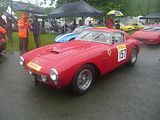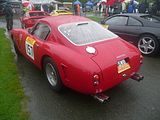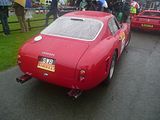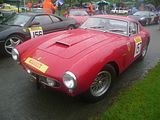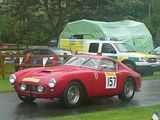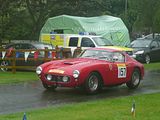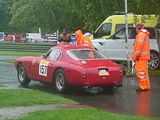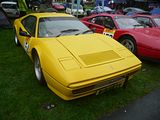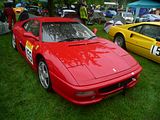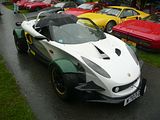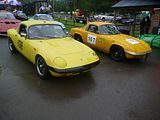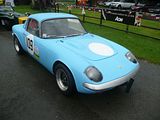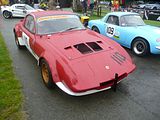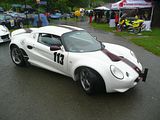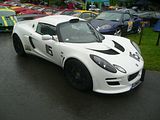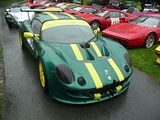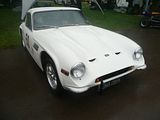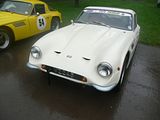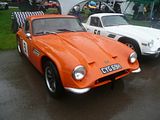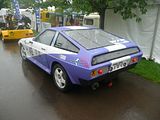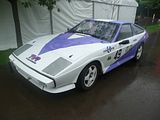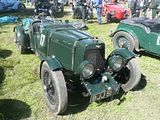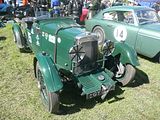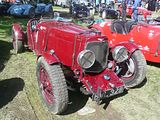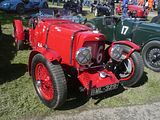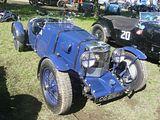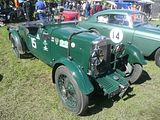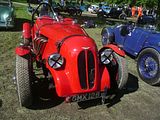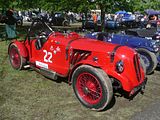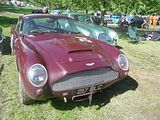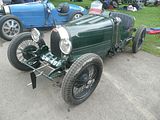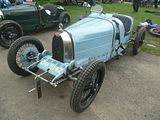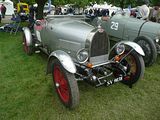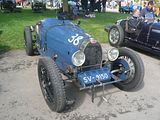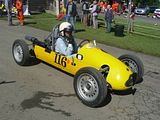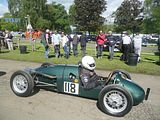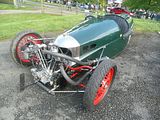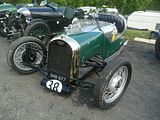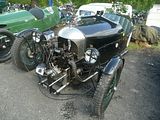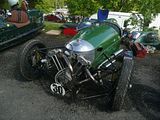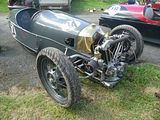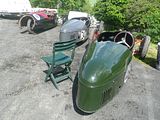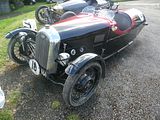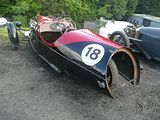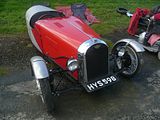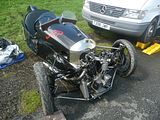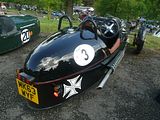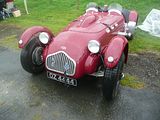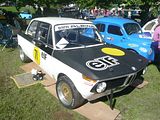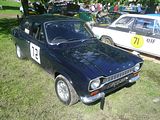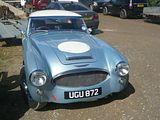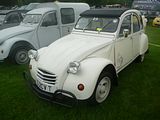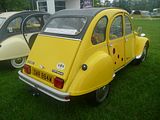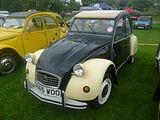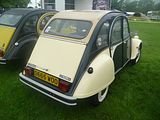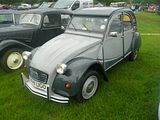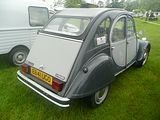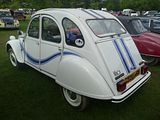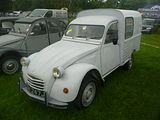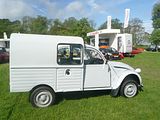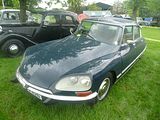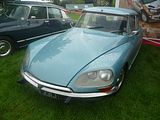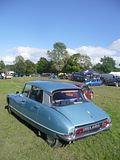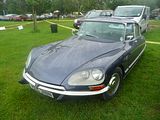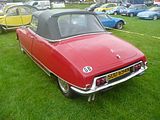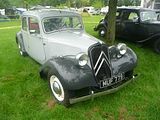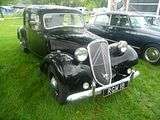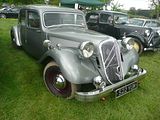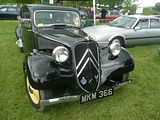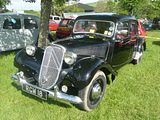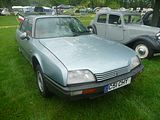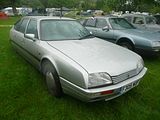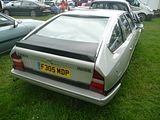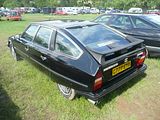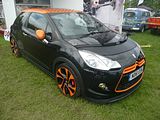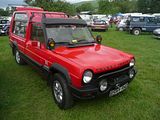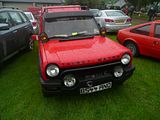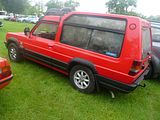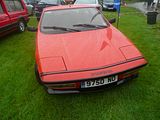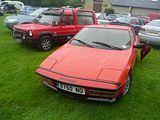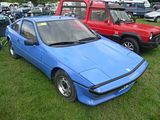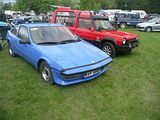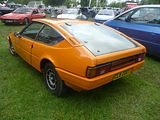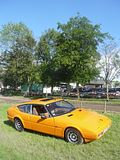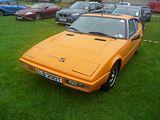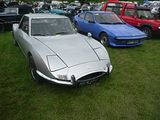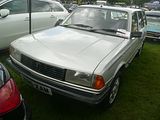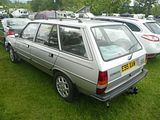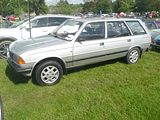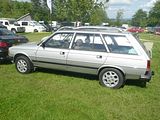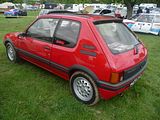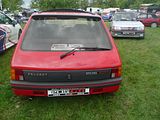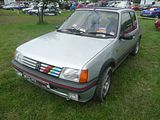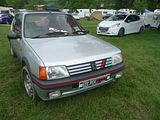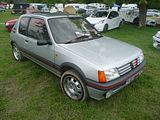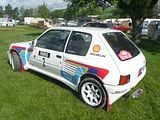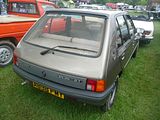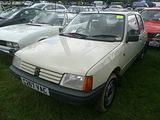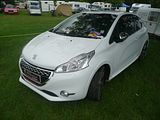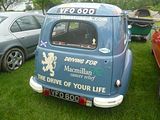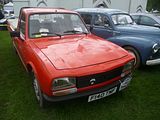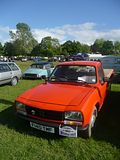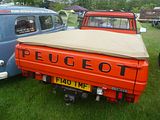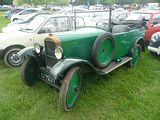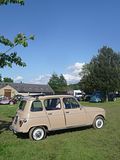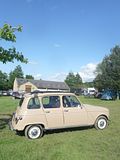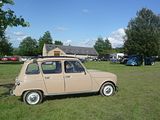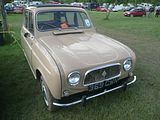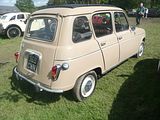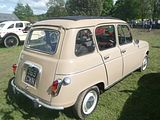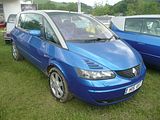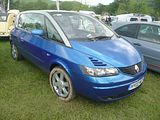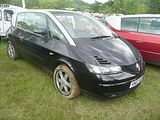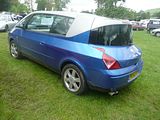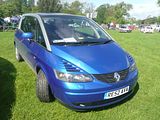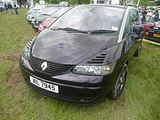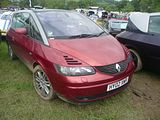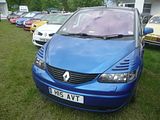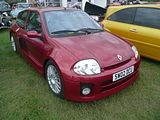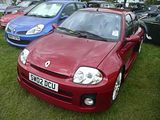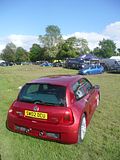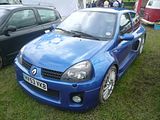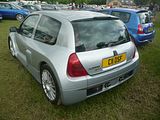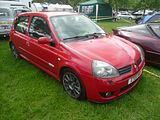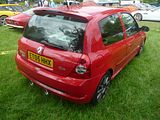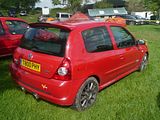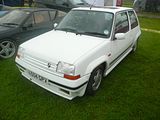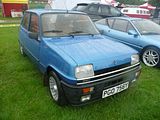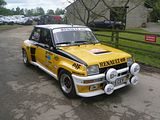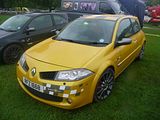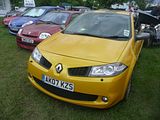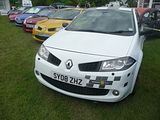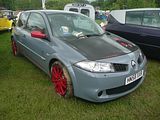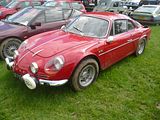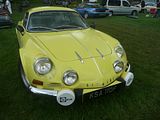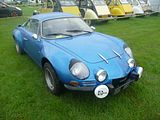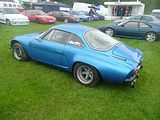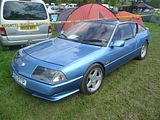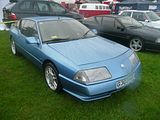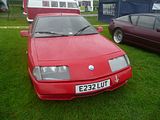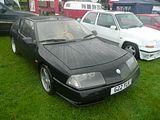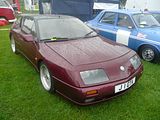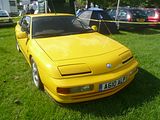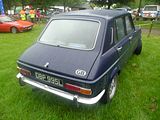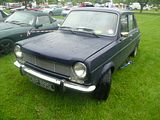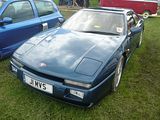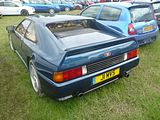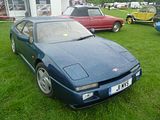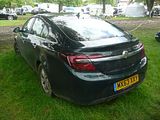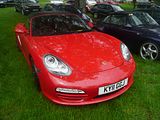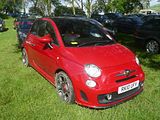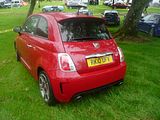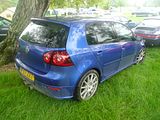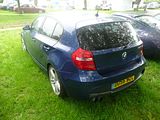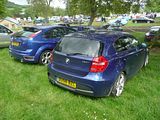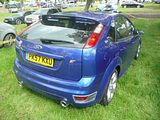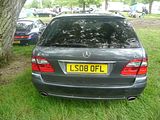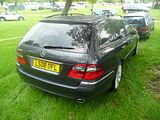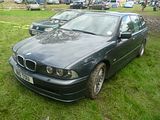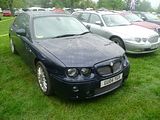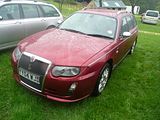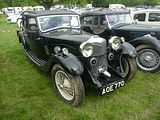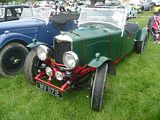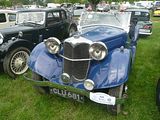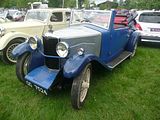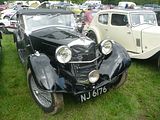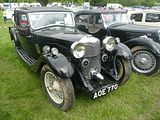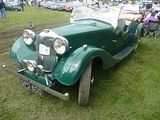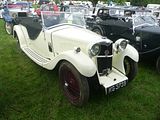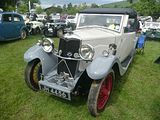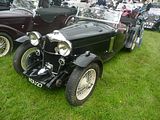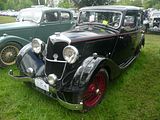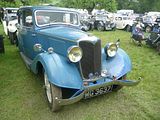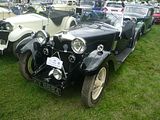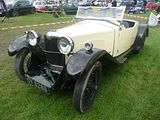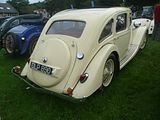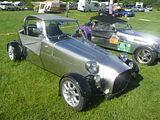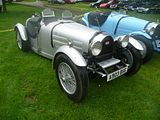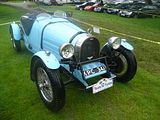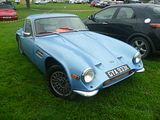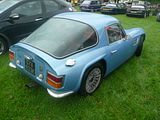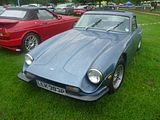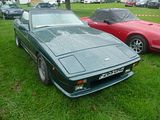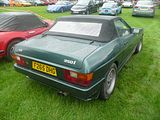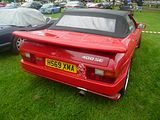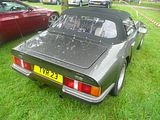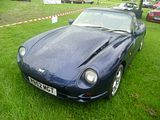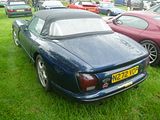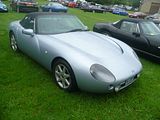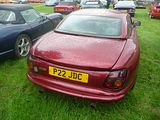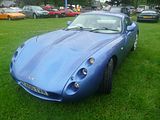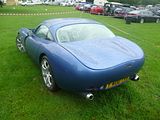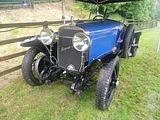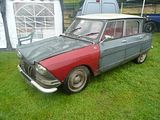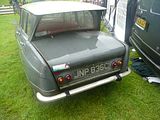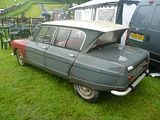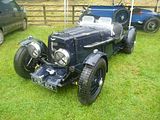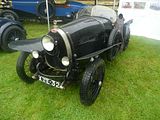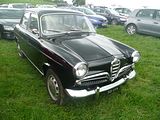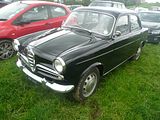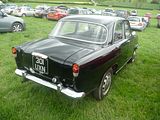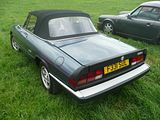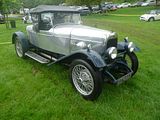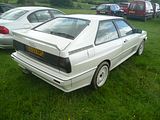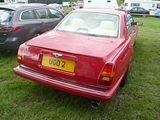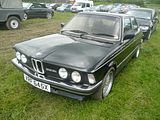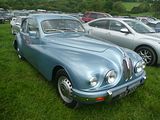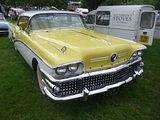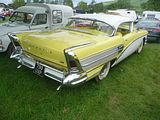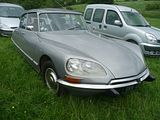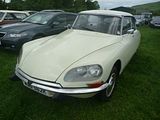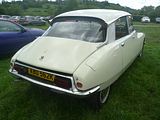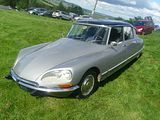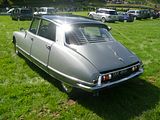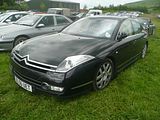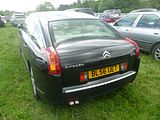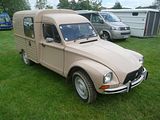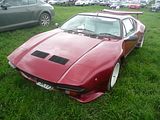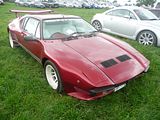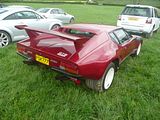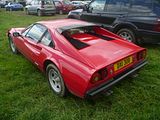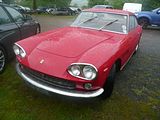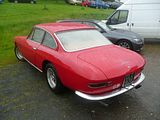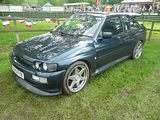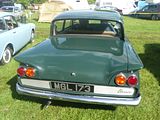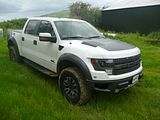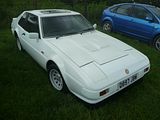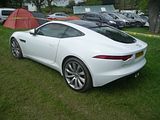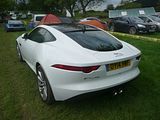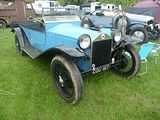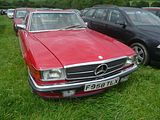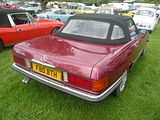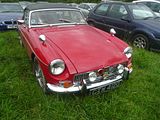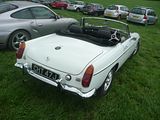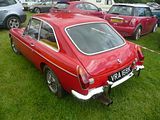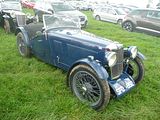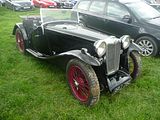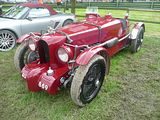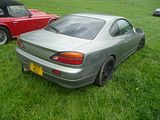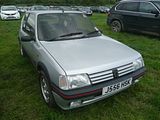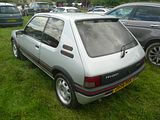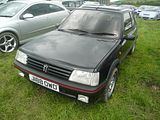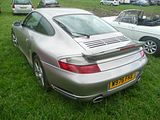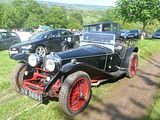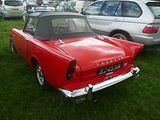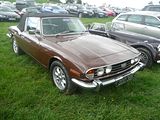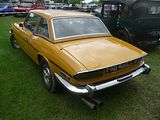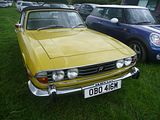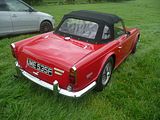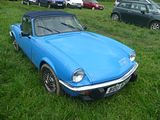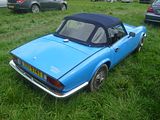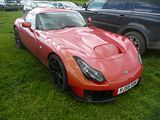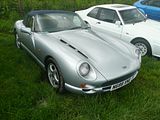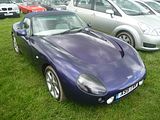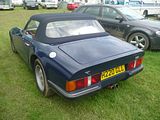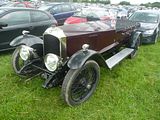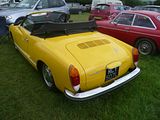The first La Vie en Blue took place on the slopes of the Cotswolds at the Prescott Hill Climb back in 2007. A small group of TheMotor.net forummers attended, and whilst we enjoyed the event, the weather left its mark, as the rain lashed down unrelentingly, all day, and we abandoned proceedings mid afternoon in favour of a beer to be supped in the warmth of a local pub with a fire ablaze in the grate. Undeterred, we booked up for 2008 and were rewarded with equally appalling weather. But ever since then, La Vie seems to have been blessed with weather which has varied from partially sunny to utterly cloudless. It has become the most popular meeting for TheMotor.net, with many choosing to spend a whole weekend enjoying the charms of this venue, with a distinctively French adding extra appeal. The organisers have always worked hard to ensure that they deliver a mixture of something new whilst retaining what people have enjoyed in previous years. Whilst an event promising one or more Bugatti Veyron will always bring some along, it is to Ian Patton, General Manager of Prescott, and his team’s credit that they always manage to find plenty of different cars and ideas, so the event can deliver plenty of surprises even to those like myself who have been every year since 2007. Not surprisingly, therefore, I look forward to this one even more than many of the other (also excellent) events in my annual calendar. As the 2014 weekend neared, though, my daily reviews of the weather forecast suggested that some aspects of the 2007 and 2008 were likely to make an unwelcome repeat. As I left home on the Saturday morning, it was, as forecast, absolutely tipping it down, and as there had been quite a lot of rain during the week, I feared for what I would find. Sadly, the answer was that The Orchard was already badly churned up just in front of our parking area. However, once the cars were safely parked, rain gear all put on and umbrellas were unfurled, the intrepid group of TheMotor.net attendees set off to see what was on offer. The answer, of course, is that although the car parks stayed quiet during the day, there was plenty to see and to talk about, and although the rain was a nuisance. it was far from a show-stopper. By mid afternoon it even ceased, leading us to worry about a lack of sun lotion before the afternoon was out. Sunday dawned far better and stayed dry all day. Although the Orchard ended up even more of a mud bath in places, there was so much that was good, that it really did not trouble me unduly. Now the car, and my shoes and clothes are all clean, what remains are all the great memories of an enjoyable weekend. and in this report, you can also enjoy it too with this presentation of well over 400 photos of what was on display:
PADDOCK DISPLAY CARS
This is what the organisers spend a lot of time planning, trying to come up with some completely new vehicles that have not been seen before, and yet again, they succeeded. Although there was, by design, a distinctly French theme to the cars on show in the Paddock, there were a few interlopers as well.
BUGATTI
The event publicity promised us three Veyrons, but when it came to it, there were only two on display. Seven years after this hypercar was first seen at this event, it remains a huge draw, and it’s not hard to see why it pulls in the crowds quite so well. One of the two, the SuperSport model from the Factory made a number of ascents of the hill every day, always, it seemed, with a Range Rover in front and behind. Even so, the sight and sound of the Veyron taking off and then tackling all the challenges of the hill is quite unforgettable.
At the end of the event, an anonymous trailer appeared and a lady driver simply got in the Veyron, lined it up on the ramps and drove it in, with millimetres to spare on either side.
Three very different Type 57 models were on display in the Paddock. The original Type 57 and later versions were designed by Jean Bugatti and were built between 1934 and 1940, with 710 being made. Coachbuilder Gangloff came up with an exotic bodystyle in the early 1930s, but only one person was brave or rich enough to place an order. More recently the owner of a type 57 chassis took the plunge and got one built. The finished car resides at the Bugatti Trust at Prescott and thus is commonly seen at events like this. Also on show was the car referred to as the “Earl Howe” car and there was one with a very different body style indeed.
More familiar were the Type 13/23 Brescia and the Type 35s.
Far smaller than any of these was one of the Type 52s, a small electric replica of the full sized Bugatti made for the children of owners of the original cars. One year there was a whole fleet of these and a collection of lucky children got to pilot them as far as they could (which was not that far before the batteries ran out!).
The area in the Upper Paddock reversed exclusively for Bugatti contained a wide variety of cars on both days, with many individual models that I did not recognise beyond the fact that there were Molsheim products.
AMILCAR
Amilcar was founded in July 1921 by Joseph Lamy and Emile Akar. The name “Amilcar” was an imperfect anagram of the partners’ names. The original Amilcar was a small cyclecar. Designed by Jules Salomon and Edmond Moyet, it bore a striking resemblance to the pre-war Le Zèbre. The vehicle was first exhibited at the Paris Motor Show in October 1921. The business was a leading beneficiary of a cyclecar boom, prompted by a government initiative which held out the promise of a reduced rate of annual car tax, fixed at 100 francs per year, for powered vehicles weighing no more than 350 kg (dry weight, without fuel or water or such extras as a spare tyre/wheel), providing seating for no more than two people and powered by an engine of not more than 1100cc. Once a vehicle exceeded these limits it ceased to be a cyclecar and was instead officially designated a voiturette.The 4-cylinder 903cc Amilcar CC appeared in 1922, with a wheelbase of just 2,320 mm (91 in). The CC subsequently became available in two further versions; the Amilcar C4 was a slightly longer sports car, while the CS, introduced in 1924, was a brisker sports version with the engine size increased to 1004 cc. The side-valve engine had splash lubrication, and came with a three-speed gearbox. The most famous model of all was the CGS “Grand Sport” of 1924; this featured a 1074 cc engine and four-wheel brakes. This in turn evolved into the more sporty CGSS “Grand Sport Surbaissé”. These models were built under license in Germany (as the Pluto) and in Austria (as the Grofri) and in Italy (as Amilcar Italiana). The marque entered automobile racing in the mid-1920s with a batch of supercharged dohc 1100cc six-cylinder cars that used a roller bearing crankshaft in the full racing version; these vehicles were also available with plain bearings, driven by famous race driver André Morel. From 1928 the company offered a light touring car; called the “M-Type”, it featured a side-valve 1200 cc engine and was launched in 1928. It was followed by the M2, M3, and M4 versions. The M-type and its successors continued to be produced through the ensuing years of financial difficulty, offered for sale till 1935, though production probably ended in 1934. 1928 saw the introduction of a straight eight, which was built with an ohc 2.3-liter engine. This, the C8, proved unreliable, and soon disappeared with only a few hundred produced.At the end of August 1934, still faced with disappointing sales volumes, the factory at Saint-Denis closed for the last time, as management struggled to save the business. A new model was clearly needed and in October 1934 the company presented the new 2-litre (12CV) Amilcar Pégase powered by a 4-cylinder ohv 2150 cc engine supplied by Delahaye. There was also a competition version of the Pégase with a 2490 cc (14CV) engine. By October 1935, the smaller Amilcar models having been discontinued, the Pégase, produced under much reduced circumstances at premises in Boulogne-Billancourt, was the only Amilcar model listed. These cars remain popular in historic motor sport events and there are usually a few to be seen at venues like Prescott. There were a wide variety of Amilcar models present at this event, many of which I had not seen before.
BNC
B.N.C. was established by Lucien Bollack, an engineer who had also worked for Hispano-Suiza, and his financier, banker René Netter, in January 1923. The technical director was Jacques Muller, also known as “Jack”. Muller’s earlier J.M.K. cyclecar formed the basis of their first car the “DZ”. B.N.C. were a successful maker of cyclecars, winning many rallies albeit not selling very many cars. B.N.C. mainly produced sports cars, and their design was similar to that of the Amilcar. The cars’ engines were not made at the factory, but were instead purchased from proprietary engine manufacturers such as Ruby (927 cc) and S.C.A.P. (900 cc). B.N.C. later produced a car with a 1,100 cc S.C.A.P. or Chapuis-Dornier engines, fitted with a Cozette supercharger. While most had three-speed gearboxes, a number of cars received four-speed units. In 1927 the B.N.C. Sport was presented, with overhead-valve engines from S.C.A.P. or Ruby, spoked wheels, and a strongly inclined radiator. To prove the mettle of the cars, a standard B.N.C. with an 1,100 cc Ruby engine lapped the (then unpaved) Le Mans circuit for 24 hours straight in 1928. The average speed was above 90 km/h (56 mph). In the late 1920s, the company tried to penetrate a more costly market sector with the “Aigle”, which had four to five-liter eight-cylinder engines made by Lycoming. Unfortunately the demand for large passenger cars and for ultra-light racing cars were both low, and Bollack and Netter were forced out of their company in 1928 when the business was acquired by Charles de Ricou, an energetic businessman who by now had a reputation for rescuing financially troubled automobile manufacturing businesses. In the case of B.N.C. his timing was less than perfect, however, in that (like many others) he failed to anticipate the Great Depression, B.N.C. launching the large 8-cylinder engined “Aigle” in October 1929, a few days before the stock market crashes gave notice of a decade of severe contraction and stagnation for the French economy. The company folded in 1931. This car is a 1926 Sports model.
CITROEN
This was a very nicely turned out 1925 5CV Cloverleaf. The original owner in 1925 was Major Bertrand Stevenson whose uncle was Robert Louis Stevenson of Treasure Island fame. The car had been dismantled some 44 years prior to purchase by the current owner, largely forgotten about. Purchased as a pile of bits in April 2008, it was fully restored over the next 12 months. The ‘ bits ‘ were in very poor condition but they were complete so it was a matter of finding out where they all fitted , restoring them and putting them back in one piece. This sounds easy but was a long job fraught with problems and costs quite a lot of money. However, the end result shows it to have been well worth it, and the final result is a Concours car restored to its original condition with a very low mileage of only 13,960 miles in its long lifetime. The car is known as ‘Miss Buttercup’ because of her bright Yellow and Black livery and is apparently a delight to drive and is a real head turner. Reliability has been proved in several VSCC Light Car events.
A Traction Avant model was also on show on the Sunday.
DB
DE DION
I watched as the driver of this 1904 De Dion Bouton went through the full procedure to start it, which included use of the starting handle. No wonder a number of people who do not have the correct technique end up breaking their wrists in so doing!
DELAGE
DELAHAYE
This fabulous Type 135M is often to be seen on the hill or track, competing for honours just as it did when new in the mid 1930s.
A befits a luxury car of the 1930s, a number of coachbuilt bodies were offered on the 135M chassis, and this is one of those very elegant designs. I’ve not seen this particular car before, and have failed to find any reference to it online. It is very elegant indeed, in my opinion.
FERRARI
This 1953 Ferrari 166 V12 Oblin Barchetta Mille Miglia is a regular at Prescott, and I have seen it at plenty of other events as well. It always attracts a large crowd of people eager to get a closer look and to learn more about it. The lucky owner, Bernard Worth, has previously told me that he bought it for “not a lot of money” from a small ad in the back of a motoring magazine in about 1960 and he has had the car ever since. In his younger days he used to drive it competitively but nowadays it has a slightly easier time of things, and it has returned to having a 2 litre V12 under the bonnet where once a 3 litre engine sat.
GERIN
One of the more intriguing cars on display was this, the sole prototype of a 1923 design, the Gérin, which was built by one of Gabriel Voisin’s apprentices. Intended to be skinned with fabric, the single prototype (with its visible workings) was offered to car manufacturers but ultimately refused due to R&D cost. Among many innovative features, it had an infinitely variable auto transmission, Four shoe hydraulic front brakes, an easily removed engine, which reportedly only took 10 minutes and an aluminum alloy (duralumin) monocoque chassis.
HOTCHKISS
HUMBER
This very imposing Limousine was parked up by the side of the track just beyond the Start line.
LAMBORGHINI
Another Italian interloper was this, a Murcielago Spider which occupied a prominent position in the Paddock, and which created a stir not just when it arrived or when the engine was fired up, but also all day long with lots of people crowded around for a closer look.
LANCIA
Third Italian Paddock star was this, an Aurelia GT Coupe.
LOTUS
In previous years this ex Senna Type 94 Formula 1 car has taken to the hill for demo runs, but largely thanks to the weather and a very wet track, it remained confined to its marquee all weekend.
PANHARD
This was one of my favourite cars of the display. The 24C and CT models were the last new design introduced by Panhard, appearing in summer 1963 and staying in production until Citroen pulled the plug on the Panhard operation in mid 1967. The 24C and CT models had an air-cooled 848cc flat twin engine, which in C guise put out 42 bhp. Few of these were sold, but the CT, with 50 bhp did better, and thanks to low weight and an aerodynamic body the car was not as slow as you may fear. The car was sold in the UK,. but it was fearsomely expensive, so not many ever came here.
This was an earlier Dyna Panhard model from the 1950s.
PEUGEOT
A 1905 model
RENAULT
This Clio RS should have revelled in the conditions., but seemed destined to remain a static exhibit for the two days instead.
SALMSON
Salmson was a French engineering company, initially in the automobile and aeroplane manufacturing area, turning to pump manufacturing in the 1960s. It was established by Émile Salmson as Emile Salmson, Ing. as a workshop in Paris in 1890, making steam-powered compressors and centrifugal pumps for railway and military purposes. Subsequently joined by engineers George Canton and Georg Unné, it was renamed Emile Salmson & Cie, building petrol-powered lifts and motors in 1896. The company became one of the first to make purpose-built aircraft engines, starting before World war I and continuing into World War II. The Billancourt factory became the car manufacturing plant directed by Emile Petit. As the firm had no direct car design expertise they started by building the British GN cyclecar under licence, displaying six cars at the 1919 Paris Salon. In 1922 the car part of the business became a separate company, named Société des Moteurs Salmson. The first Salmson car proper used a four-cylinder engine designed by Petit with unusual valve gear: a single pushrod actuated both inlet and exhaust valves pushing to open the exhaust and pulling to open the inlet. This was used in the AL models from 1921. Later the same year the company built its first twin-overhead-cam engine, which was fitted to the 1922 D-type, although most production at first used the pushrod engine. Salmson won 550 automobile races and set ten world records (1921-28) before closing the racing department in 1929. The S-series cars took over from the D-type, starting in 1929 and becoming a long lived series.A series of models followed in the 1930s. Production resumed after the Second World War with a car that was largely the same as the pre-war model. A new design was launched in 1950, but the company was bankrupt by 1953. Renault purchased what remained in 1957. A number of different ore-war Salmson models were on show at this event.
VERNON DERBY
Derby was founded in Courbevoise by Bertrand Montet in 1921 to build voiturettes (cyclecars). These were powered by American vee-twin motorcycle engines, which were shortly replaced with Chapuis-Dorniers. In this form, it became a close copy of Citroën’s 5CV (“five horsepower”); at ₤195 for the two-seat roadster, it was competitive with the contemporary Austin Seven (₤225). Shown at the 1923 Olympia Motor Show, Derby failed to gain many sales in Britain. It was there, however, the company displayed a 9 hp British-bodied Sports model with wire wheels, priced at ₤275. This followed the 1923 racer, which had competed at the Brooklands 200 mile event.Production peaked at approximately 200 cars a year in 1925, falling to approximately 100 a year between 1928 and 1931.By 1927, the car was being sold as a Vernon-Derby, taking the name of the marque’s sales agent, Vernon Balls. The company offered an 8 hp with four-speed manual transmission in place of the previous three-speed.The next year, the lineup had expanded to three models: the 8 hp sports car (typically with an 1100cc Chapuis-Dornier four) and two new sporty two-seater sixes, a 1.5 litre sidevalve and a 14 hp The 1.5 litre was replaced the next year by a smaller-displacement 12 hp sidevalve six.Derby showed a two-seater sportsman’s coupe at the 1930 London Motor Show, powered by a 16 hp 18,475 cc six, which resembled the Bugattis of the era.Like other marques of the period, Derby involved themselves in motor sport, with driver Douglas Hawkes’s front wheel drive Miller with Derby parts (dubbed a Derby-Miller) acting as a testbed and promotional tool; that it was driven by Gwenda Stewart did not hurt publicity, either.Nor did Stewart’s results: she took a land speed racing 1.5 litre class record at Montlhéry in 1930, with a mile at 118.13 mph In 1934, she took another class record in a 1.7 litre Derby, at 147.79 mph, which stood five years.Stewart would also enter the 1934 and 1935 Le Mans, with the recently-introduced V8, falling out both times.Derby ended production with unusual and sophisticated models: 12/50, introduced in 1931, with front wheel drive and fully independent suspension, and a 2 liter V8-powered front wheel drive model, which debuted 1933 (with a chassis price of ₤525). The car on display is one I have seen at Prescott several times before.
READY FOR THE HILL
There was a full program of hill climbing in the program for both days, with a completely different set of classes on Sunday compared to Saturday, so the Paddock changed totally.
AUSTIN SEVEN
A complete class of Austin Seven models comprised lots of Specials and the odd car which just could have been original Ulster or Nippy models. These diminutive cars retain the 747cc engine of the originals, so are never going to go that fast, calling for lots of skill from their drivers to get their most out of their machines.
FERRARI
In among the expected collection of 308/328, 348/355 and 360/430 cars was a real gem, an original SWB 250 GT. This car was probably worth more than the rest of the entry put together. The conditions may have been dreadful, but this seemed not to be any deterrent to the driver.
LOTUS
Among the varied cars in the Lotus class was Tony Shute’s Expose, a one-off built on the limited production 340R model. There was an example of that car as well.
Most of the competing cars were Elan based, with a Plus 2 in the field as well as the smaller cars or from more recent production, so Elise and Exige models.
TVR
There were a number of cars competing in a round of the TVR challenge, with 1960s models joined by a lone Tasmin.
ASTON-MARTIN
A mouth-watering array of Astons, mostly 1930s cars were lined up, with the intent of providing a direct comparison to the Bugatti class that followed them. A couple of post war models, a DB2 and a DB4 joined the field.
BUGATTI
Fittingly, there were lots of Bugatti lined up to take to the hill. The majority of the cars competing were Type 13 and 23 Brescia or Type 35 models, but there were a few other Types as well.
COOPER 500
MORGAN
The Morgan class was mainly comprised of three wheeler cars from the 1930s. There was one example of the latest reborn Three-wheeler with them, and when you saw this along side its forebears, you can see just how much larger it is.
MISC
Allard
This Alpina B6 proudly boasted that it was one of the very first cars made by the Alpina organisation.
Earlier than the Alpina was this BMW 2002.
Also in this class were a Mark 1 Escort and a Renault R8 Gordini
More unusual, perhaps, is this VW/Porsche 914.

Austin-Healey 3000.
This is a very familiar car at VSCC events.
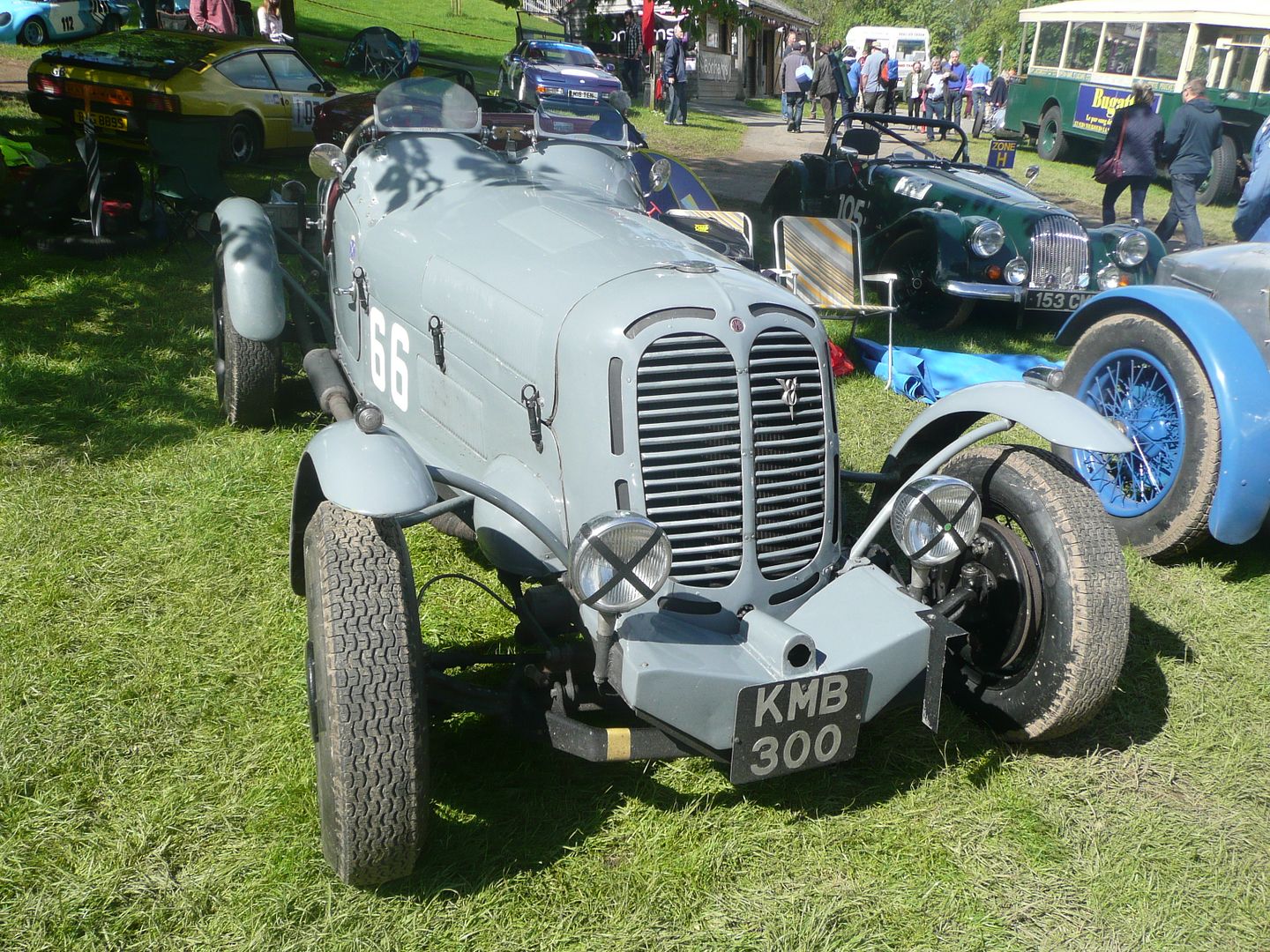
FRENCH CAR CLUB DISPLAYS
CITROEN
As usually happens at this event, there were more Citroen here than any other French marque. The rarer and older cars were conspicuous by their absence this year, but there were still plenty of nice cars to have a look at. Most numerous were the 2CV cars, of which there were a number including some of the diverse limited edition cars that were produced, such as the Beachcomber, the Dolly and the Charleston. The Van was also there.
Also well represented were the DS models.
There were plenty of Traction Avant cars, too.
Sadly. no sign of Chris Hendrie and his stunning CX GTi Turbo that so delighted everyone last year, but there were a number of other CX models, including a particularly rare late model Prestige.
There were also a couple of examples of the follow on to the CX, with an XM and a duo of C6 cars on show.
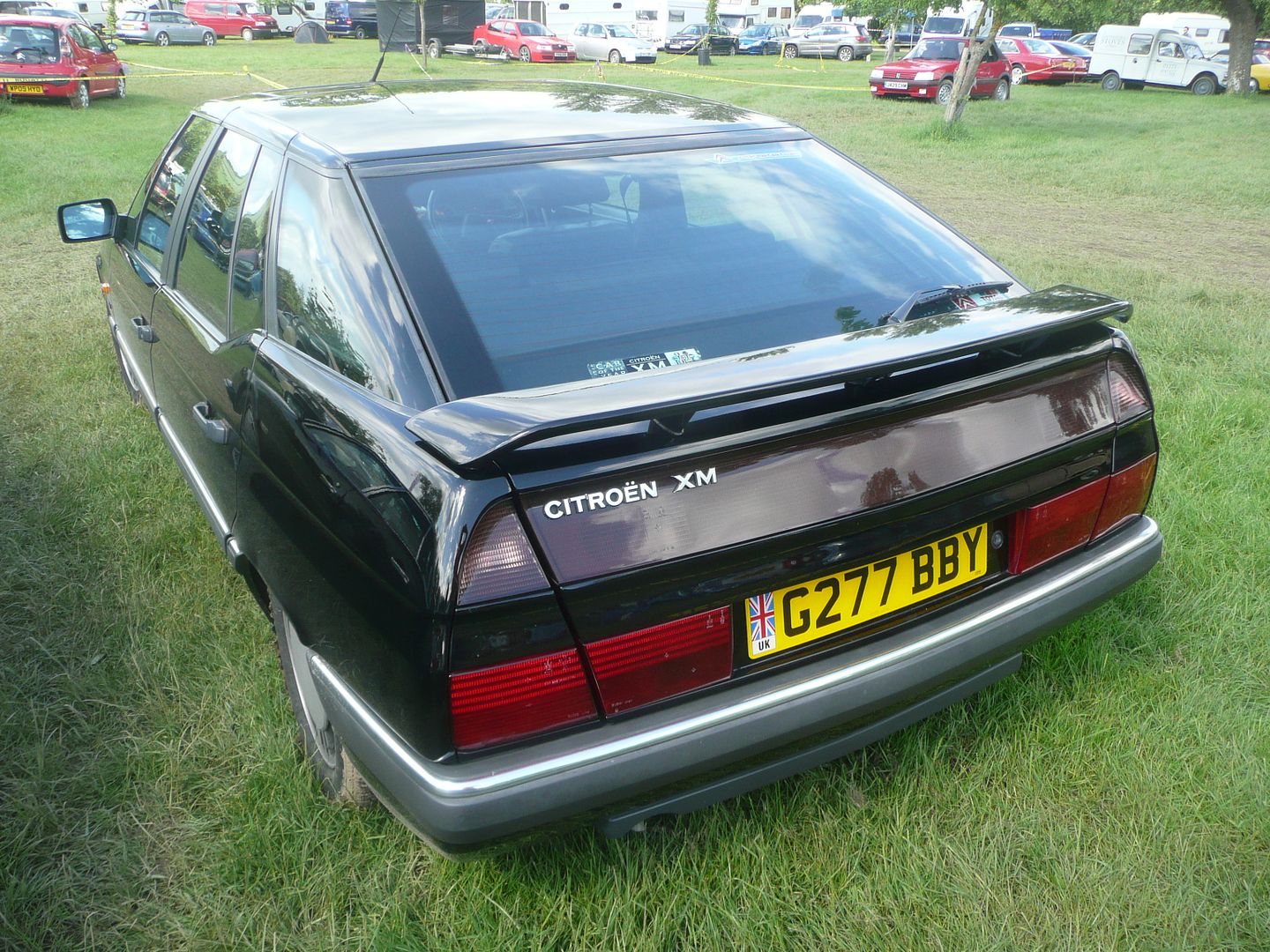
This DS3 Racing was the sole example of the current range in the display.
MATRA
2014 marks the 50th anniversary of Matra producing cars, and there will be a number of events during the year to mark this, with a pan-European gathering at Beaulieu in July forming the centrepiece of those activities. There was no such fuss being made at this event, though, with just a handful of cars on show – fewer than intended, it turned out, as a couple somehow got their journeys interrupted en route on Saturday. My favourite was the Rancho, and this example is one of the finest of the handful of these cars that remain.
I also rather like the Murena, of which a couple were to be seen. Launched in late 1980, this three seater coupe, offered in 1.6 and 2.2 litre guises, had a short production life as Matra needed the space to built the Espace when that came on stream in 1984. Just over 22,000 Murena were made, and the car was never officially sold in the UK.
It predecessor, the Bagheera, was sold here when new. The importer even went to the bother of converting some of the cars to right hand drive, though there are plenty of left hand drive cars in the UK, too. Over 47,000 of these cars were made, but although the body which is made from a kind of reinforced plastic does not rot, the chassis was not galvanised, and it does, so the survival rate is not that high.
Oldest Matra on show was an M530.
PEUGEOT
There were no Peugeot on display at all on the Saturday, but fortunately, this was corrected on the Sunday when quite a few models arrived. One of the rarest now was this 305 Estate. An Automatic model, it was first registered towards the end of production of this mid-sized family car’s life. Once quite a common sight on our roads.
Most numerous model on show was the 205 GTi, a car which celebrates its 30th birthday this year. As well as the sports models, there were a couple of more prosaic 205s with a GT and the rather more basic XL on display as well.
There were lone examples of the later 207 GTi (undepicted) and the current 208 GTi . The latter looks particularly understated, so yo may not even realise when you see one on the road unless you have time for more than a second glance.
A late arrival to the event was this lovely 504 Cabrio. These cars are very stylish indeed, and are bound to go up in value over time.
From Peugeot’s commercial vehicle heritage were a 203 Estate and a 504 Pickup, both of which were cars that attended this event last year.
Oldest Peugeot was this. With no badges on it and no information plaque, I am not sure of the exact model or even the year.
RENAULT
Oldest, and probably rarest Renault on display, only arriving late on the Sunday, was this splendid early 4L.
There were no Avantime on show on the Saturday, but 5 turned up on the Sunday, including one recently acquired by my friend Steve McMonagle. Having sold the first Avantime he owned a while back, he bought a green one last year, which is currently in need of a new gearbox. A second one soon followed which was stripped for parts and when this one became available for the price of a gearbox, he snapped it up as well.
Also well represented was the Clio V6, including cars in a couple of rare colours.
On the Sunday a neat line of Clio Cup 182 models made for an impressive sight in their distinctive paint finish.
A lone R5 GT Turbo represented the Regie’s riposte to the Peugeot 205 GTi, and (hot starting problems apart) was deemed by many to be at least as good a car as the Pug. It was joined by the earlier first generation R5, which was badged Gordini in the UK and Alpine on the continent.
I caught this R5 Turbo just as it was heading towards the exit gate, having failed to spot it during the day.
There were a number of more recent hot Renaults, too, with the rare R26R Megane joining the more common RenaultSport models.
RENAULT-ALPINE
There were a number of A110 models, including one in red and yellow, two colours that are rarely seen on this popular French classic.
No sign of the A310 at all, but plenty of GTA and A610 cars, including some of the later limited edition cars.
SIMCA
Sole Simca for the weekend was this 1100. This was one of the first hatchback designs, launched in 1967, and for some time it was the best selling car in France, not that you would guess now, as hardly any survive. It was also quite popular in the UK, where the survival rate is even lower.
VENTURI
There were a couple of the very pretty Venturi sports cars from the 1990s.
OTHER CLUB DISPLAYS
THEMOTOR.NET
There are always a few new cars on fleet from year to year. Despite the tradition that I turn up with a surprise new acquisition every other year, I was not among the people with a new set of wheels this year. The honours for new cars goes to Dan Grazier with his Mercedes C350 CDi, which I failed to photograph, and a number of others which were in both a position, and a light and a lack of mud that I did take their picture: Bryan Macefield’s Evoque, Alex Wild’s Insignia and Martin Cooper’s Boxster.
There were plenty of more familiar machines, too, with a change of plan meaning that my own Abarth appeared on both days, to save getting both cars all muddy!, and a quartet of blue cars: Ed Barnes’ 993, Simon Plummer’s Golf R32, Piers Roache’s BMW 130i and Andy Convery’s Focus ST Mountune.
Once upon a time the Alfa 156 GTA was the most popular car on the forum, and then it was the BMW 130i. Now it would seem that the E Class Mercedes Estate occupies that position. Are we all getting older? Nevertheless, Mark Lee’s E500 does look and sound rather good, even if the TVR would have scored higher marks in both regards (had the weather been dry!) and James Swan’s E320 CDi model also looks very smart.
Further interest was provided when Jeff Bunting arrived in his recently acquired Alpina B10 Touring. He was wearing an appropriate Alpina T Shirt as well, so it is fair to say that he is a convert to the marque!
Despite all this lot, I think the car we all loved hearing the most is one that I also did not manage to photograph. Pete Geddes’ Jaguar XF 5.0 not only looks great, but the replacement exhaust system he has had fitted made it sound absolutely fantastic.
MG/ROVER
The ZT and 75 Owners are event regulars, but this year they had a much smaller display than previously. Their hearts must have sunk when they saw their pitch as it was right by the worst area of the mud, with only one way in and out. Luckily they managed to get everyone in and out. There was a good mix of cars including an example of the very rare Rover 75 V8 model.
RILEY
There was a very impressive collection of Riley models present on the Sunday. Riley had a bewildering array of different cars on offer in the late 1920s and 1930s which is without doubt one reason why their financial viability diminished leading to their acquisition by the Nuffield organisation in 1938. One or two of the cars are easy to identify, but I am not even going to try to put labels on the rest of them.
ROBIN HOOD
I had to go and look at the badge on these. It’s not a marque I’ve come across before, and if I am being totally honest, the styling looks a bit awkward, but the owners clearly love their cars and that is what matters.
TEAL
By the Sunday there several of these pastiche Bugatti replicas. The first cars were produced in the late 1960s and the styling at least looked decently close to the Type 35 Bugatti, but some of the latest cars just looked plain odd.
TVR
A couple of the local TVR Clubs get together to put on a great showing of these charismatic British sports cars on the Saturday. Luckily, they had a pitch right near the main gate, so were untroubled by the mud. Although there were plenty of the more recent cars that you most often see, there were some earlier cars, too, with both a Vixen and a 3000 M among the cars on show.
The “wedge” era was also represented, with a 350i and a 400SE.
Bridging between these cars and the more familiar later ones was the S and this was a nice example of the V8 model.
Among the other TVRs were a varied mix of Chimaera, Griffith, Cerbera, Tuscan and a T350.
BONHAMS
Up on a raised area to the side of the main hill climb is an area that was given over to a display of cars that world famous auction house Bonhams will be offering later in the year.
Two Hispano Suiza models were the stars of their display. The maroon car is a 1927 27hp T49 with Weymann body. Hispano Suiza really established themselves as maker of high end prestige cars when production resumed after the First World War, with their H6 model. Sensation of the 1919 Paris Show, the H6 featured a light yet rigid four-wheel-braked chassis that matched its state-of-the-art power unit for innovation. Indeed, so good were its servo-assisted brakes that Rolls-Royce acquired the rights to build the design under licence. The H6 combined performance with flexibility, comfort with good handling, and safety with reliability in a manner which enabled Hispano-Suiza to compete successfully with Rolls-Royce, Bentley, Bugatti, Isotta Fraschini and the United States’ luxury marques. This success led to the introduction of two smaller but closely related Birkigt designs based on his H6, which were earmarked for production at Hispano’s factory in Barcelona. These were the four-cylinder 2.5-litre T48 and six-cylinder 3.8-litre T49. Chassis layout followed that of the Paris-built H6, featuring semi-elliptic springing all round and torque-tube drive, as did that of the overhead-camshaft engines, which delivered 60 and 90bhp respectively. These two ‘T’ series models were in production from 1924 until 1933. This car, Barcelona chassis number ‘7874’, carries Weymann-type saloon coachwork. This type of body construction took its name from its inventor – Charles Terres Weymann a Frenchman whose background in aviation led to him using a lightweight wooden framework for motor bodies, which was held together by steel plates and covered with fabric. The principal advantage of the Weymann system was its inherent flexibility, which meant that it was free of the squeaks, creaks and rattles that hitherto had affected all traditional coachbuilt bodies. It was an immediate success; as well as making bodies at its factories in France and (later) England, Weymann licensed production to numerous independent coachbuilders, the saloon body of this car being the work of H J Mulliner, one of this country’s finest. The Barker-patented dipping Marchal headlights are another particularly noteworthy feature. The car’s first owner was a Colonel Guy Geddes, who purchased it from Albemarle Motors, London in 1927. On his death in 1958 it passed via the trade to one Mike Slay, who acquired the car in 1959 and after initial use placed it in storage. While in Mike Slay’s ownership, ‘7874’ was inspected by Hispano-Suiza authority George Briand, who wrote: ‘I have examined the car and found it in very good condition… my records show also that throughout its life this car has been thoroughly serviced.’ Its next owner, Clive Sherriff, recalled the circumstances of his acquisition for The Hispano Society’s newsletter in April 1991. Slay told him that the T49 had been laid up after the Autovac failed, but although he never got around to fixing it had employed someone to turn the engine over once a week and polish the car. It took Clive Sheriff a few months to get it running again, much of his time being consumed by a painstaking reconstruction of the complicated silencer to original pattern. As part of the re-commissioning, the chassis, engine and brakes were carefully stripped and found to be in remarkably good order, confirming George Brand’s observations. New tyres were fitted, the wheels repainted and some of the brightwork re-plated. It is believed that about a dozen of the T49 cars survive, and estimates are that this car will fetch around £150 – 200,000 when it is auctioned.
This Citroen Ami, although complete, will require quite a lot of work to restore it to its former glory.
My favourite among the cars on show here was a lovely 1934 Aston-Martin Ulster. This will doubtless fetch big money when the hammer falls on it.
The Brescia Bugatti that they were offering sported some very ungainly front mudguards that ruin the lines of this lovely little sports car.
IN THE CAR PARK
It’s always worth a wander around the public car parks at an event like this. On the Saturday only a brave few had parked up on the hill, and there weren’t many more who decided to risk it on the Sunday. The adjoining field was quite a mess by Sunday afternoon, whereas the field across the road was actually not too bad at all. I meandered through them both, picking out cars of interest, as I had done in the non-display area of The Orchard, and whilst there was nothing that was really rare, there was plenty that was worth a photo.
ALFA ROMEO
I’ve seen the Giulietta Berlina at a number of events before. It is far rarer than the Sprint (Coupe) and Convertible models from the 750/101 Series which crop up quite frequently.
There were also a couple of 105 Series Spiders, including this Series 3 car with its rather large bumpers and awkward plastic add ons.
ALVIS
I believe this is a 12/50 model, also known as the “Duck’s Back” thank to the distinctive curve to the rear end styling.
AUDI
The urQuattro is one of my favourite cars from the 1980s. This one, which appeared to be in excellent condition, is one of the last produced, which means it is a 20 valve model.
AUSTIN-HEALEY
A very nice 3000 model.
BENTLEY
Red is quite a bright colour for a car as large as this Continental R, but it does work surprisingly well.
BMW
In the days when the E21 3 Series was on sale, BMW’s were relatively expensive, and comparatively few were sold, so it is no surprise that they are rare now. This is an example of what was at the top of the range, the 323i.
This 319 is a regular at Prescott as its owner is a marshall.
BRISTOL
Whilst the shape is distinctive enough to make identifying this as a Bristol not exactly difficult, it takes a real expert to tell individual models apart usually. However, this one helpfully sported 403 badges on the bonnet to tell me that this is the later version of this early 1950s model.
BUICK
Looking a bit like a refugee from the Autumn Classic event, which has an American theme, was this splendid period piece, a 1958 Buick Special. Not a car for the quiet and unassuming owner, it is physically huge. Some inconsiderate soul boxed the car in, so extricating it at an awkward angle proved more than challenging, even though it clearly has power assisted everything to help with manoeuvering.
CHEVROLET
Although this looks like a large car, the 1966 Nova was considered to be a mid-sized model by Chevrolet. and indeed all US buyers of the period.
CITROEN
There were quite a few classic Citroen models in the general parking, I would guess as the owners are not members of the Citroen Car Club. There were both 2CVs and DS in this category.
I also liked this C6, a future classic, if ever there was one.
Tucked among the motorhomes and tents was this Acadiane, the van version of the Dyane.
DE TOMASO
Top marks for the owner of this Pantera GTS not just for bringing his car, but also for getting over the lumps and bumps and through the mud of the field adjacent to the event.
DELLOW
This Dellow was parked up among the Riley Club Display cars. I cannot think of any specific connection between the two brands so suspect the linkage is more around the owners than the cars.
FERRARI
This 308 GTB was at the event for both days. On the Saturday the owner had ventured up to a parking slot on the hill, admittedly near the end so getting on and off should not have been too hard, but I noticed that on the Sunday he had decided not to chance it, and the car was in the main field across the road.
This 330 GTC was found in the Upper Paddock on the Saturday. A very elegant design, these cars were made in the mid 1960s, soon gaining a larger and more powerful engine and the name 365 GTC.
FORD
I am not entirely convinced by the change to round headlights, but in all other regards, this Escort Cosworth was a nice example of the type.
This Ford Consul Classic certainly seems to get used lots, as just the previous weekend it was at the “Caring with Cars” event and it is also a regular at the monthly Bristol Queens Square Breakfast Club meets.
A very different sort of Ford is this F150 Raptor which was parked up in one of the muddiest areas of the entire event, the link between the top field and The Orchard.
FRAZER NASH
GINETTA
This G26, a car often seen at Prescott, has some styling resemblance to the Lotus Excel, of which it is a contemporary.
JAGUAR
No gathering of classic car is complete, it would seem, without an E Type or two, and this event proved to be no exception.
The modern day equivalent is, of course, the F Type and this Coupe model is just stunning. This was a V6 car, and I know that these cars sound even better than they look, but the owner did make a rather tentative departure, clearly trying to avoid the worst of the mud, so the sound track was somewhat muted.
LANCIA
This was a lovely example of the Lambda, Lancia’s innovative sports tourer that first appeared in 1922.
LOTUS
The Six was precursor to the far better known Seven. Definitely a car for fair weather only, this one was only present on the Sunday.
MERCEDES
The W123 has definitely acquired what the Germans would call “Young Timer” classic status. Saloon, Estate and Coupe models are all highly regarded, and those that escaped being sent to Africa for new life as taxis are a popular and robust classic which can be enjoyed on a daily basis.
Also nice are the R107 SL cars and there were a couple of splendid examples of these at the event.
MG
Plenty of evidence of the classic and much loved MGB model.
I came across this pairing of pre-war sporting MGs. I think they are PA or PB models.
Far more distinctive was this supercharged K Type car.
MORGAN
NISSAN
The GT-R like this one needs no introduction, whereas the other Nissan which attracted my camera will be unfamiliar to most. This is a Silvia, and is the follow on to the 240SX model that was sold in the UK in the mid to late 1990s.
PEUGEOT
There were a couple of 205 GTi cars parked up in the main car park, presumably because their owners were not members of either of the Peugeot Owners Clubs whose cars were in the main Club Display.
PORSCHE
The 911 was well represented, with examples of all generations from the original model through 964 to 993, 996 and 997.
RILEY
This delightful little Imp was to be found in the upper car park on the Saturday. Parked up close by was a saloon model as well.
SUNBEAM
As well as the Series 3 Alpine that I found in the main car park, there was also an example of the very rare Harrington le Mans, an after market conversion which pre-dates the MGB GT by some years.
TRIUMPH
The ever popular Stag was well represented, with several nice examples present.
This was not the event to see many TR cars, with just one TR4 and a TR5 that I found.
There was also a Spitfire 1500 in the very period colour of Pageant Blue.
TVR
It was nice to see a Sagaris in the main car park, as this was one of the models unrepresented by the local Owners Clubs the day before.
It was joined by a Chimaera and a Griffith, and elsewhere I came across an S.
VAUXHALL
An example of the 30/98, an expensive but fast sports model sold by Vauxhall from 1913 for 10 years.
VOLKSWAGEN
I did rather like this late model Type 1 Karmann Ghia.
Despite the rather soggy start to Saturday and the challenges of the mud in parts of The Orchard, this was, as ever, an excellent weekend. Not perhaps the “best ever”, as the weather clearly deterred a number of people from bringing their cars to show, and more in the way of blue skies and warm sun would have been welcome, but in all the important respects, this was yet another great event. It was good finally to meet a couple of long time forummers, and to catch up with all those who make this an annual reservation in their diary. Although there was plenty of time to catch up with each other’s news as well as to enjoy the cars and the hill climbing during the day, conversation was far from lacking as we enjoyed an excellent evening meal at the nearby Teddington Hands Inn. The Forum may have brought us all together some years ago, but some real and strong friendships have been formed over the years, and it is largely down to the appeal of this event that this has all been possible. Let’s hope that the sunny weather returns for the 2015 La Vie en Bleu!

